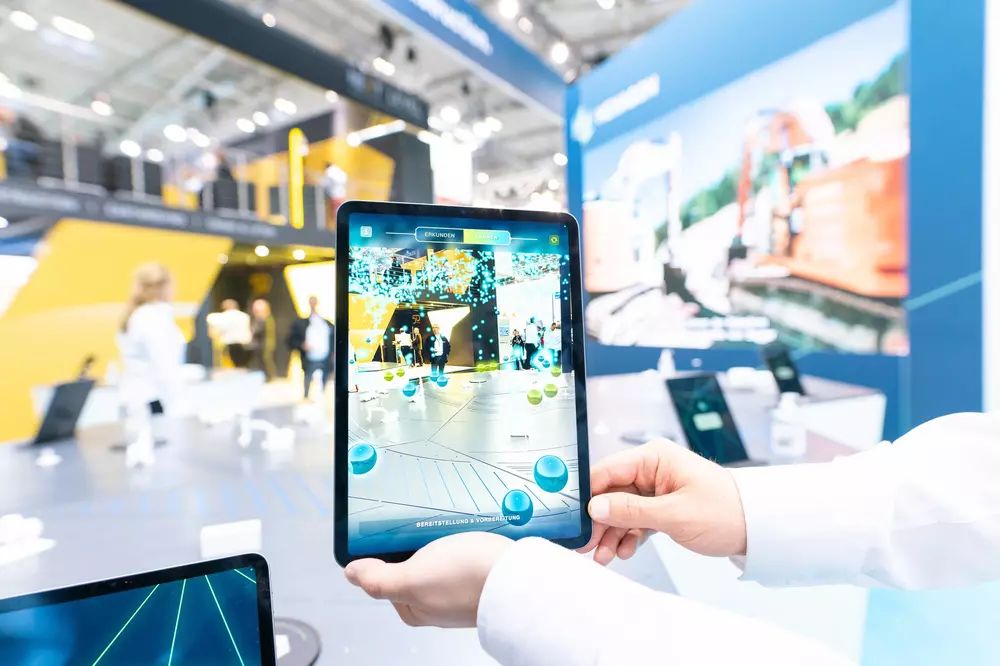• Cross-manufacturer data protocols available
• Precision through 3D machine control
• Data acquisition using robust sensors
More efficient, more transparent, more sustainable – digitalization and networking are seen as effective measures that help get a grip on the major challenges facing the construction industry. In view of this significance, bauma 2025 has added “Networked Construction” to its key topics. The World’s Leading Trade Fair for Construction Machinery, Building Material Machines, Mining Machines, Construction Vehicles and Construction Equipment will be held from April 7 to 13 at the Munich exhibition center.
Smart attachments with standardized digital language
In networked construction, digital technologies and communication systems are integrated into the construction process, which improves collaboration and efficiency. For example, attachments supply process data and communicate with the respective carrier machines. A standardized digital language is required for this communication to also work regardless of the manufacturer. The foundation for this was laid by the MiC 4.0 BUS protocol, which won the Innovation Award in the field of digitization at the last bauma in 2022. Version 1.0 of this is now freely available with full functional security. Thanks to the common universal protocol, the carrier machine recognizes which attachment is to be used, which parameters it needs to function, and whether it is even suitable for use on this machine. “Accidents caused by incorrectly closed quick hitches, unsuitable hydraulic pressure or incorrectly dimensioned attachments can thus be reliably avoided,” reports Dr. Darius Soßdorf, Managing Director of the MiC 4.0 working group at the German Mechanical Engineering Industry Association (VDMA). The working group includes manufacturers of construction machinery and sensors, software companies, and construction firms.

Bidirectional information flow between construction machine and user
Through the advancing digitalization of construction machinery, users receive increasing amounts of data which not only show them the condition of the machines, but also provide valuable information on their performance and work quality. For example, more efficient fuel routes can be developed on the basis of current consumption data, while machine deployment can be optimized by accurately recording the respective capacity utilization. A new function of the telematics system from the manufacturer Bobcat shows that the information flow does not have to be a one-way street from the machine to the operator. The engine of wheel loaders, mini excavators, etc. can be remotely deactivated – and also reactivated – by the owner with just a few clicks. That prevents unauthorized use and theft, which can result in lower insurance premiums, among other things.
Valuable support for machine operators
On the basis of digital information, and given the shortage of skilled workers, even less experienced machine operators can avoid slight errors and accidents, and achieve very good work results. For example, the construction machinery manufacturer Develon, formerly known as Doosan Construction Equipment, together with surveying specialist Leica Geosystems, recently started offering 3D machine control as a retrofit option for one of its crawler excavator models. Design information and real-time cut/fill indications are displayed on the control panel in the cab so that the driver can carry out the excavator work exactly according to the reference model.
Sensors connect the physical and virtual world
Sensors are a prerequisite for the digitalization of construction machinery, including developing assistance and autonomy systems. For example, they register the boom and bucket position, are used for fluid management, or help detect structural loads and damage. One of the biggest challenges for using sensor technologies in the construction machinery industry is often the harsh working environment, which is why manufacturers like Baumer are developing extremely robust sensors specifically for use in mobile machines. Special material, design and test concepts ensure that the data required for digitalization flows even under the toughest operating conditions.
Additional information about bauma as well as photo and video material are available online at https://bauma.de
About bauma
bauma is the world’s leading sector event for construction machinery, building material machines, mining machines, construction vehicles and construction machinery. With a total exhibition area of 614,000 square meters, it is the largest trade fair in the world. In 2019, it broke all records with about 3,700 exhibitors from 63 countries and more than 620,000 visitors from over 200 countries. bauma is held every three years. The next event will be held in Munich from April 7 to 13, 2025.
bauma NETWORK
In addition to holding the world-leading bauma trade fair, Messe München has a wealth of experience when it comes to organizing other international construction machinery trade fairs. For example, Messe München also organizes bauma CHINA in Shanghai as well as bauma CONEXPO INDIA in Greater Noida/Delhi. In March 2017, the M&T EXPO was added to the bauma NETWORK in the form of a license agreement with SOBRATEMA (Brazilian Association of Technology for Construction and Mining).
Messe München
As one of the world’s leading trade fair organizers, Messe München presents the world of tomorrow at its around 90 international trade fairs. These include twelve of the world’s leading trade fairs such as bauma, BAU, IFAT, and electronica. Its portfolio comprises trade fairs for capital and consumer goods, as well as for new technologies. Together with its subsidiaries, it organizes trade fairs in China, India, Brazil, South Africa, Turkey, Singapore, Vietnam, Hong Kong, Thailand, and the U.S. With a network of over 15 associated companies and almost 70 offices worldwide, Messe München is active in more than 130 countries. The more than 150 events held annually attract around 50,000 exhibitors and around three million visitors in Germany and abroad.

